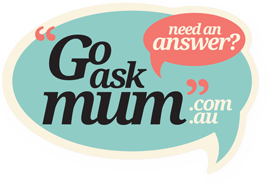Written by Jane Barry – Jane Barry is a registered midwife and Philips AVENT Ambassador. For 40 years, Jane has specialised in parenting, nursing and pediatric health.
Getting Your Head Around Breastfeeding
Breastfeeding can be a difficult concept for some pregnant women. For a process that’s so relatively simple, it can generate a lot of diverse feelings.
Whilst most of us know breastfeeding is the best and most natural way to feed human babies, it is still a really “big thing” in the mind of many women and perhaps their partner as well.
For women who’ve never breastfed before or who are pregnant for the first time Philips AVENT has prepared the following tips to understand the process:
Preparation is key
Unlike past generations modern day mothers don’t have as much opportunity to see extended family members and other women breastfeeding. For lots of women, the first time they’ve ever held a baby is when their own is born.
It’s important to think about how breastfeeding will impact on you. According to the Australian Breastfeeding Association – “A solid foundation for establishing breastfeeding is supported by antenatal education”, In other words, there are real benefits to learning about breastfeeding before your baby is born.
Caring for a newborn and learning what’s involved can be overwhelming. It pays to have some understanding of what it’s going to be like.
The truth is that breastfeeding, although natural, includes a few learned skills, particularly for a new mother. Healthy newborn babies tend to know what to do if they’re given the opportunity to breastfeed straight after they’re born. This is why midwives and maternity care providers do all they can to support skin to skin contact and maximise early breastfeeding opportunities.
The thought of breastfeeding
Statistics are unclear about how many women are truly turned off by the thought of breastfeeding. Internet forums are not ideal sources to base credible conclusions, but the truth is that comments such as “repulsed”, “turned off”, “yuk” do feature.
Occasionally women will share their thoughts directly to friends and family that they’re not keen on the idea of breastfeeding,though many struggle explaining exactly why.
When so much positive energy, education and resources are put into supporting breastfeeding women, why do negative feelings about it still exist?
Some women say they don’t like the idea of sharing any of their bodily fluid with another person, even if it is milk for their own baby. Sometimes partners aren’t in favour of breastfeeding and are unsupportive and women often worry unnecessarily that their partner will no longer see their bodies or attractive following breastfeeding.
I would but…
Many mothers are concerned that breastfeeding will hurt, they won’t know what to do or they’re concerned about getting cracked nipples and/or mastitis; Some also believe that they won’t be able to breastfeed because they’ve had breast reduction or augmentation surgery.
Changes in breast shape after breastfeeding can also raise concerns for some women-becoming saggy, losing breast shape and tone are some of the more specific reasons. Some women just don’t want to breastfeed and may choose not to share their reasoning.
In reality, most women can breastfeed successfully. There are very few true contraindications to breastfeeding, these mostly relate to very specific illnesses in a mother and/or her baby.
If you’re considering not breastfeeding
Speak with your maternity care provider, your midwife or doctor, who know you and your individual history, will be able to give you lots of advice about your options. Check what equipment is commercially available to support you to breastfeed your baby. Don’t just assume that you can’t breastfeed. Breastfeeding is so beneficial that it’s worth doing all you can to give it a go. Current research from National Health and Medical Research Foundation (NHMRC) states: “While exclusive breastfeeding is ideal, any amount of breastmilk is beneficial to the infant and mother.”
A breast pump and milk storage options will help if you aren’t able to directly breastfeed, but still want your baby to have your breast milk. Breast care products are available for a range of specific concerns. Inverted, flat or tender nipples can be helped by using a specific nipple device.
You may find it useful to speak with other mothers who are or who have breastfed.
References
- http://www.printgraphics.net.au/myfiles/Breastfeeding_With_Confidence_2/index.html#/4
- http://worldbreastfeedingweek.org
- http://www.unicef.org/programme/breastfeeding/baby.htm
- https://www.breastfeeding.asn.au/bf-info/your-baby-arrives/planning-breastfeed-prepare-succeed
- file:///C:/Users/jane/AppData/Local/Microsoft/Windows/INetCache/IE/D575NITI/n56b_infant_feeding_summary_130808.pdf











One of the main reasons women think they can’t breastfeed is because the baby has a tongue or lip tie which prevents the baby getting a proper latch. Doctors and a lot of lactation consultants don’t know how to check correctly for ties, and most professionals don’t know that any tie will cause problems. You need to see dentists who specialise in ties and ibclc ( I never remember I get that last one correctly lol )
Even if it’s is not your first baby always go see a lactation consultant and join a group of breastfeeding women for support.